Toyota Aygo vs VW Polo – Hvilken bil er det beste valget?
Sammenlign ytelse, bagasjerom, forbruk og pris på et øyeblikk.
Finn ut hvilken bil som er det beste valget for deg – Toyota Aygo eller VW Polo?
A Comprehensive Comparison: Toyota Aygo vs. VW Polo
In today's automotive market, compact city cars are growing in popularity due to their efficiency and versatility. Among the leading contenders in this segment are the Toyota Aygo and the VW Polo. Both vehicles offer unique features and specifications appealing to various consumers. This comparison examines their technical aspects, innovations, and overall performance to help you make an informed decision.
Body Structure and Dimensions
The Toyota Aygo is classified as an SUV, with dimensions measuring 3700 mm in length, 1740 mm in width, and 1510 mm in height, providing a compact yet spacious interior for passengers. With a curb weight of 1015 kg, the Aygo is lightweight, which contributes to its agile handling.
In contrast, the VW Polo is a hatchback with a larger footprint, boasting dimensions of 4074 mm in length, 1751 mm in width, and 1451-1431 mm in height, depending on the variant. This larger size allows the Polo to accommodate up to five passengers comfortably and offers a substantial trunk capacity of 351 liters. The Polo's curb weight ranges from 1138 kg to 1372 kg, depending on the engine option chosen.
Engine Performance and Efficiency
Under the hood, the Toyota Aygo is equipped with a 998 cm³ petrol engine, producing 72 HP and 93 Nm of torque. This engine configuration allows for a maximum speed of 158 km/h and an acceleration time from 0 to 100 km/h of 15.5-15.6 seconds. The Aygo impresses with its fuel efficiency, managing a consumption of 4.8 to 4.9 L/100 km and CO2 emissions of 108-112 g/km, which places it within the C efficiency class.
The VW Polo offers a broader range of engine options, including a 999 cm³ engine producing 80 to 115 HP and a larger 1984 cm³ engine delivering up to an impressive 207 HP. The Polo's torque varies, reaching up to 320 Nm with the 2.0-liter engine. The Polo's acceleration times are significantly faster, particularly with the high-performance variants that achieve 0-100 km/h in as little as 6.5 seconds. Fuel consumption for the Polo ranges from 5.2 to 6.5 L/100 km with CO2 emissions varying between 118 to 149 g/km, categorizing it in efficiency classes D and E.
Transmission Options
The Toyota Aygo offers both manual and automatic transmission options, including a traditional manual gearbox and a Continuously Variable Transmission (CVT), giving drivers flexibility in how they want to engage with their driving experience.
The VW Polo stands out due to its Dual-Clutch Transmission (DCT), available alongside a manual gearbox. This innovative transmission type allows for quick gear shifts and greater efficiency, enhancing the overall driving dynamics of the Polo.
Interior Comfort and Technology
Interior features play a significant role in modern vehicles, and both the Aygo and Polo offer user-friendly designs. The Aygo boasts comfortable seating for up to four and an intuitive dashboard layout, though it's a bit simpler in terms of tech features compared to its rival. Standard entertainment features include a modern audio system with Bluetooth connectivity.
On the other hand, the VW Polo is renowned for its more upscale interior design, accommodating five passengers and offering advanced technology like an infotainment system with a larger touchscreen, smartphone integration, and optional premium sound systems. The Polo's additional space and premium materials contribute to a more luxurious feel.
Safety and Innovations
Safety is paramount in both models. The Aygo incorporates essential safety features including airbags, anti-lock brakes, and stability control. More advanced driver assistance systems may be less prevalent, but Toyota’s reputation for reliability and safety is well-founded.
The VW Polo, however, pushes innovation further with an extensive array of safety options, including adaptive cruise control, lane assist, and emergency braking systems. The Polo's construction and technology help it achieve high safety ratings in crash tests, making it a standout in this category.
Conclusion: Which One to Choose?
When deciding between the Toyota Aygo and VW Polo, it ultimately comes down to personal preferences and priorities. The Aygo offers excellent fuel efficiency and ease of maneuverability in urban settings, making it a great option for city dwellers. Meanwhile, the VW Polo provides superior performance, a more spacious interior, and advanced technology, appealing to those who seek comfort and innovation in a compact car.
Both cars have their strengths, and the final choice will depend on your specific needs and lifestyle. Whether you lean towards the practicality of the Aygo or the premium feel of the Polo, you are sure to find satisfaction in either model.
Her blir det konkret: De tekniske forskjellene i detalj
Kostnader og forbruk: Pris og effektivitet er blant de viktigste faktorene ved valg av bil – og her vises ofte de store forskjellene.
Toyota Aygo har et minimal prisfortrinn – den starter på 18100 €, mens VW Polo koster 19800 €. Forskjellen er omtrent 1745 €.
Også når det gjelder drivstofforbruk, ser vi forskjeller: Toyota Aygo klarer seg med 4.80 L og er dermed nesten umerkelig mer drivstofføkonomisk enn VW Polo, som bruker 5.10 L. Forskjellen er omtrent 0.30 L per 100 km.
Motor og ytelse: Under panseret ser man hvilken modell som har den mer sportslige karakteren – og hvem som akselererer best.
Når det gjelder motoreffekt, har VW Polo et tydelig overtak – 207 hk mot 72 hk. Det tilsvarer en forskjell på omtrent 135 hk hk.
I akselerasjon fra 0 til 100 km/t er VW Polo betydelig raskere – 6.50 s mot 15.50 s. Forskjellen er omtrent 9 s.
Når det gjelder toppfart, ligger VW Polo tydelig foran – den når 240 km/h, mens Toyota Aygo stopper på 158 km/h. Forskjellen er omtrent 82 km/h.
Også når det gjelder dreiemoment, er det forskjeller: VW Polo drar klart merkbar kraftigere med 320 Nm mot 93 Nm. Forskjellen er omtrent 227 Nm.
Plass og praktiske egenskaper: Utover rå ytelse teller hverdagskomfort mest. Her avgjøres det hvilken bil som er mest praktisk og allsidig.
Seter: VW Polo tilbyr en smule flere sitteplasser – 5 mot 4.
Når det gjelder egenvekt, er Toyota Aygo i liten grad lettere – 1015 kg mot 1143 kg. Forskjellen er omtrent 128 kg.
Når det gjelder bagasjeromsplass, tilbyr VW Polo påfallende mer plass – 351 L mot 231 L. Forskjellen er omtrent 120 L.
Ved maksimal lastekapasitet scorer VW Polo merkbar bedre – opptil 1125 L, omtrent 296 L mer enn Toyota Aygo.
Også når det gjelder nyttelast, vinner VW Polo merkbar – 457 kg mot 345 kg. Forskjellen er omtrent 112 kg.
Vår konklusjon: VW Polo viser seg å være gir konkurrenten liten sjanse og blir dermed vår DriveDuel Champion!
I denne sammenligningen fremstår VW Polo som den mer komplette allrounderen.
Toyota Aygo
Toyota Aygo skiller seg ut med sitt stilige design og kompakte størrelse, noe som gjør den ideell for bykjøring. Den tilbyr en kombinasjon av energieffektivitet og fleksibilitet, perfekt for de som ønsker en praktisk, men allikevel trendy bil. Med sin lekne karakter og tilgjengelige tilpasningsmuligheter, er Aygo et attraktivt valg for unge sjåfører.
detaljer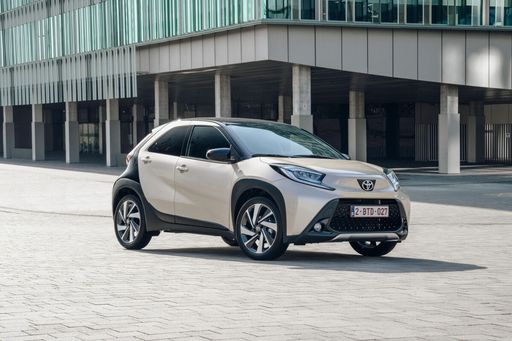 @ Toyota
@ Toyota
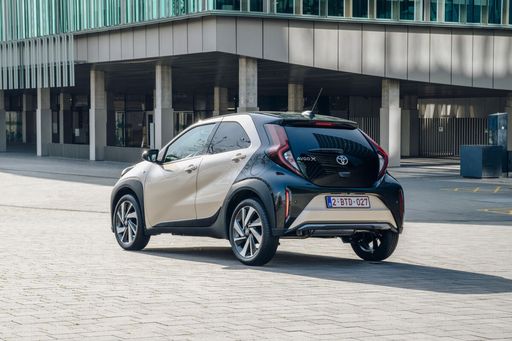 @ Toyota
@ Toyota
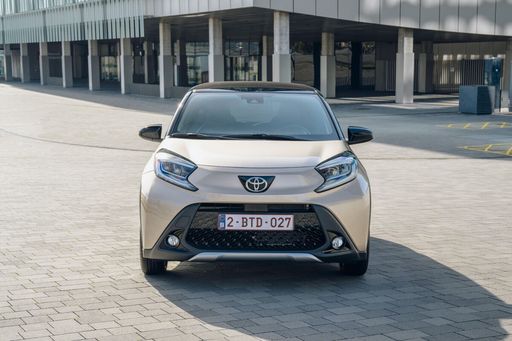 @ Toyota
@ Toyota
 @ Toyota
@ Toyota
 @ Toyota
@ Toyota
 @ Toyota
@ Toyota
VW Polo
Polo er en av de mest populære kompaktbilene på markedet, kjent for sitt stilige design og imponerende kjøreopplevelse. Med romslig interiør og avanserte teknologiske løsninger, tilfredsstiller den både reisende og sjåfører. Denne bilen kombinerer praktiskhet med effektivitet, noe som gjør den til et attraktivt valg for både bykjøring og lengre turer.
detaljer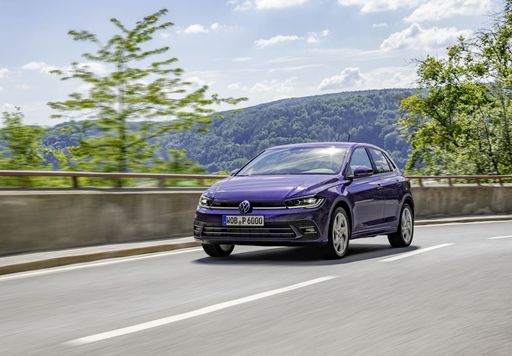 @ Volkswagen
@ Volkswagen
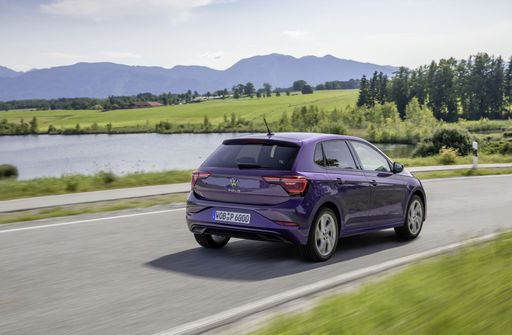 @ Volkswagen
@ Volkswagen
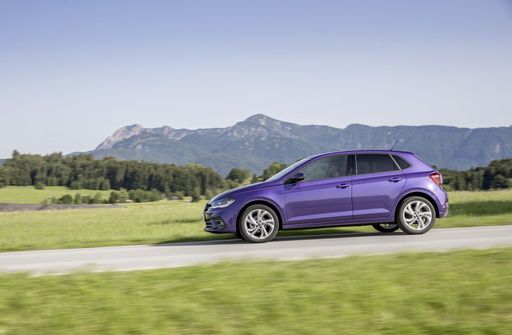 @ Volkswagen
@ Volkswagen
 @ Volkswagen
@ Volkswagen
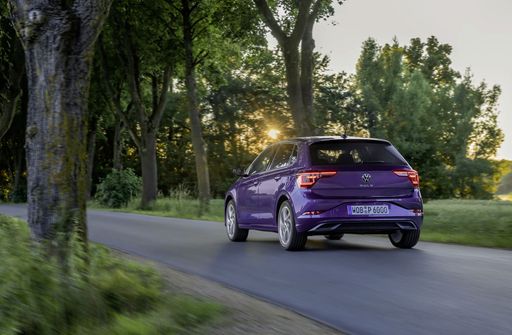 @ Volkswagen
@ Volkswagen
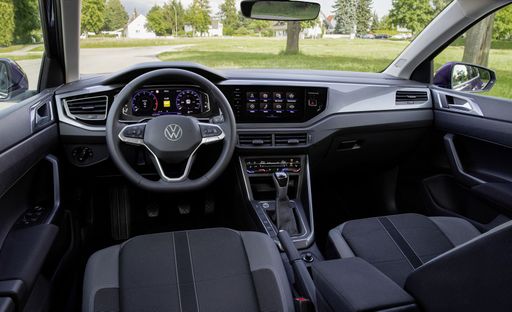 @ Volkswagen
@ Volkswagen

|

|
|
|
|
Kostnader og forbruk |
|
|---|---|
|
Pris
18100 - 25800 €
|
Pris
19800 - 35500 €
|
|
Forbruk L/100km
4.8 - 4.9 L
|
Forbruk L/100km
5.1 - 6.5 L
|
|
Forbruk kWh/100km
-
|
Forbruk kWh/100km
-
|
|
Elektrisk rekkevidde
-
|
Elektrisk rekkevidde
-
|
|
Batterikapasitet
-
|
Batterikapasitet
-
|
|
co2
108 - 111 g/km
|
co2
116 - 148 g/km
|
|
Tankkapasitet
35 L
|
Tankkapasitet
40 L
|
Mål og karosseri |
|
|---|---|
|
Karosseri
SUV
|
Karosseri
Hatchback
|
|
Seter
4
|
Seter
5
|
|
Dører
5
|
Dører
5
|
|
Egenvekt
1015 kg
|
Egenvekt
1143 - 1378 kg
|
|
Bagasjerom
231 L
|
Bagasjerom
351 L
|
|
Lengde
3700 mm
|
Lengde
4074 mm
|
|
Bredde
1740 mm
|
Bredde
1751 mm
|
|
Høyde
1510 mm
|
Høyde
1431 - 1451 mm
|
|
Maks bagasjerom
829 L
|
Maks bagasjerom
1125 L
|
|
Nyttelast
345 kg
|
Nyttelast
432 - 457 kg
|
Motor og ytelse |
|
|---|---|
|
Motortype
Bensin
|
Motortype
Bensin
|
|
Girkasse
Manuel, Automat
|
Girkasse
Manuel, Automat
|
|
Gir detalj
Manuell girkasse, CVT-girkasse
|
Gir detalj
Manuell girkasse, Automatisk dobbeltclutch
|
|
Drivtype
Forhjulsdrift
|
Drivtype
Forhjulsdrift
|
|
Effekt hk
72 hk
|
Effekt hk
80 - 207 hk
|
|
Akselerasjon 0-100km/t
15.5 - 15.6 s
|
Akselerasjon 0-100km/t
6.5 - 15.6 s
|
|
Maks hastighet
151 - 158 km/h
|
Maks hastighet
171 - 240 km/h
|
|
Dreiemoment
93 Nm
|
Dreiemoment
93 - 320 Nm
|
|
Antall sylindre
3
|
Antall sylindre
3 - 4
|
|
Effekt kW
53 kW
|
Effekt kW
59 - 152 kW
|
|
Slagvolum
998 cm3
|
Slagvolum
999 - 1984 cm3
|
Generelt |
|
|---|---|
|
Modellår
2024 - 2025
|
Modellår
2024 - 2025
|
|
CO2-effektivitetsklasse
C
|
CO2-effektivitetsklasse
D, E
|
|
Merke
Toyota
|
Merke
VW
|
Hvilke drivlinjer finnes for Toyota Aygo?
Finnes som Forhjulsdrift.
De viste prisene og dataene er estimater basert på tyske listepriser og kan variere avhengig av land. Denne informasjonen er ikke juridisk bindende.
